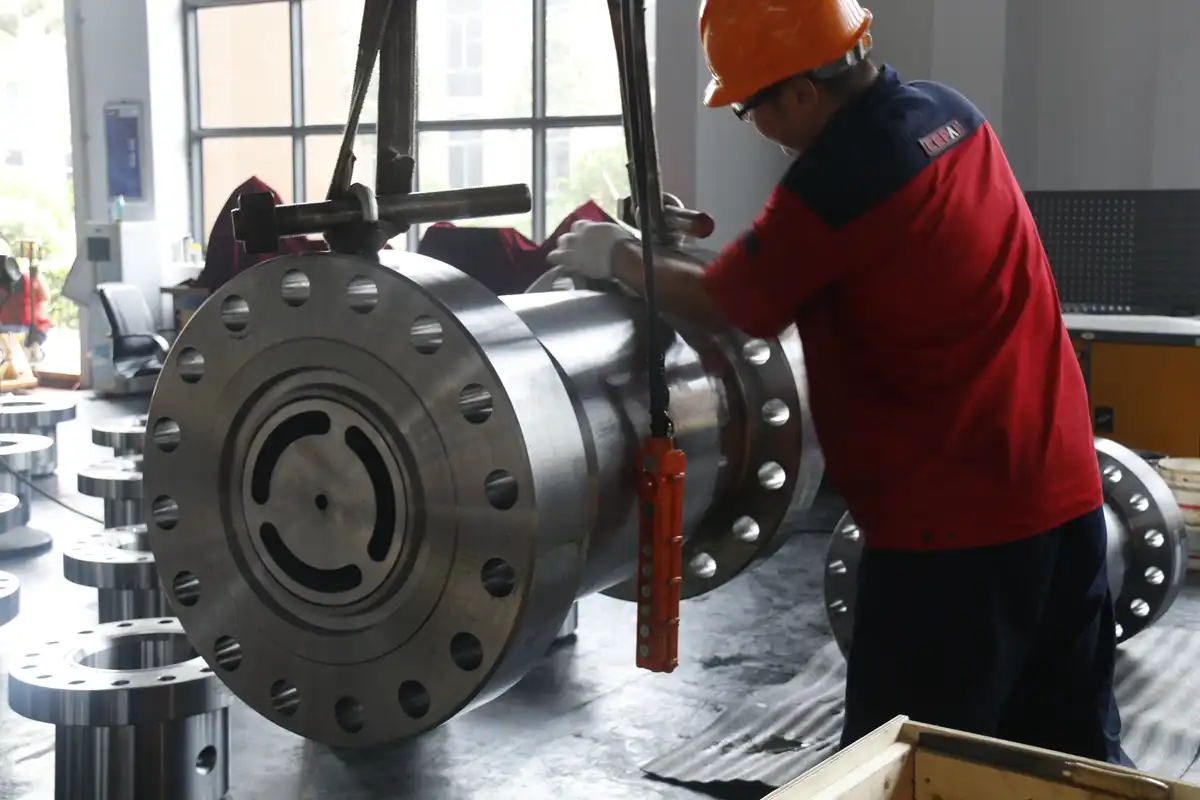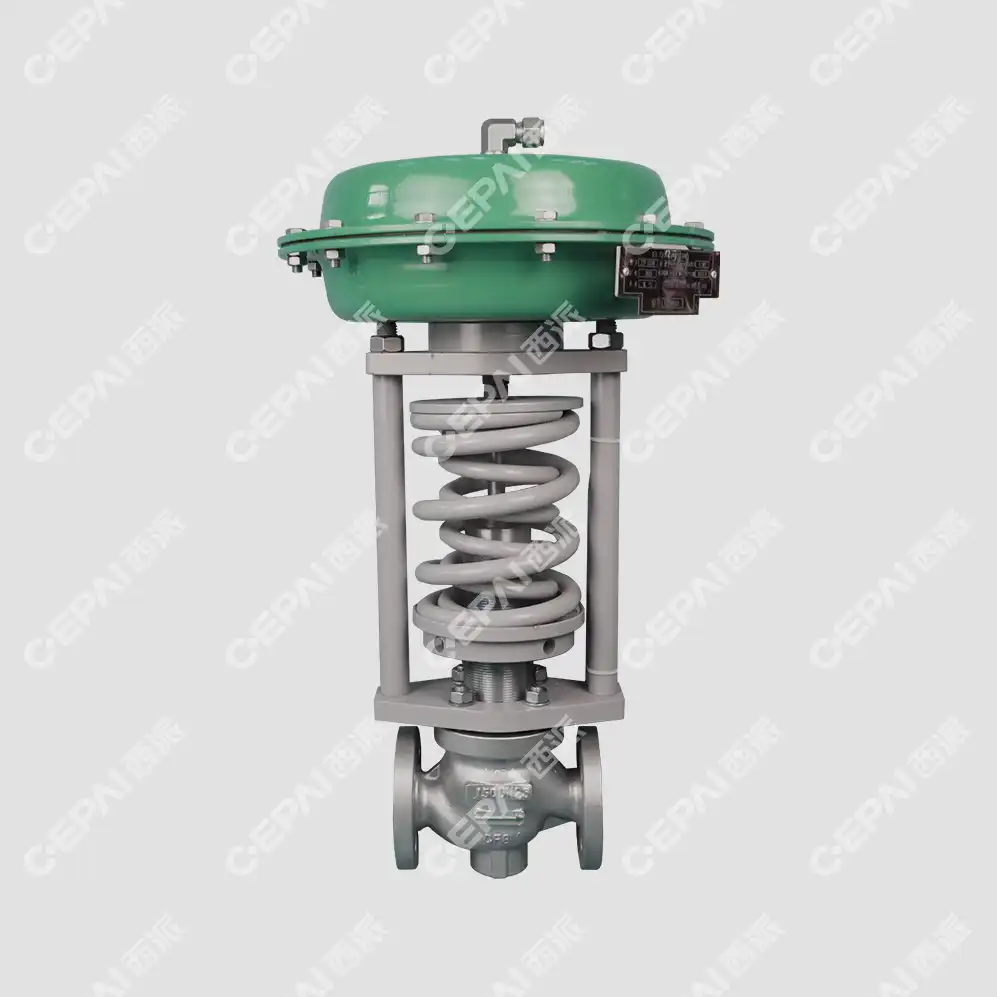How to Choose a Corrosion-Resistant Self-operated Valve for Outdoor Use?
Selecting the right corrosion-resistant Self-operated Control Valve for outdoor applications requires careful consideration of environmental factors, material specifications, and operational demands. Outdoor installations face unique challenges including temperature fluctuations, moisture exposure, UV radiation, and chemical contaminants that can accelerate valve deterioration. The choice of appropriate valve materials, protective coatings, and design features directly impacts long-term performance, maintenance costs, and system reliability in harsh outdoor environments.
Understanding Material Selection Criteria for Outdoor Valve Applications

Stainless Steel Grades and Their Corrosion Resistance Properties
When evaluating materials for outdoor Self-operated Control Valve installations, stainless steel emerges as the premier choice due to its exceptional corrosion resistance and mechanical properties. The most commonly specified grades include 304 and 316 stainless steel, each offering distinct advantages for different environmental conditions. Grade 304 stainless steel provides adequate corrosion resistance for mildly corrosive outdoor environments and represents a cost-effective solution for many applications. However, for more demanding conditions involving chloride exposure, marine environments, or industrial atmospheres, grade 316 stainless steel offers superior performance through its enhanced molybdenum content, which significantly improves pitting and crevice corrosion resistance. Advanced stainless steel alloys such as 2507 super duplex provide exceptional performance in highly corrosive outdoor conditions where standard grades may prove inadequate. These materials combine high strength with outstanding corrosion resistance, making them ideal for offshore installations, chemical processing facilities, and other severe environments. The selection between different stainless steel grades must consider not only the immediate corrosive threats but also long-term exposure effects, maintenance accessibility, and lifecycle costs. Self-operated Control Valve systems in outdoor environments benefit significantly from proper material selection, as replacement costs and downtime can be substantial in remote or critical installations.
Environmental Factors Affecting Material Performance
Outdoor valve installations must withstand a complex array of environmental stressors that can compromise valve integrity over time. Temperature cycling represents one of the most significant challenges, as repeated expansion and contraction can create stress points where corrosion initiation becomes more likely. Moisture exposure, whether from precipitation, condensation, or humidity, creates conditions conducive to various corrosion mechanisms. The presence of airborne contaminants such as salt spray in coastal areas, industrial chemicals, or agricultural substances can accelerate corrosion processes beyond what standard materials can withstand. UV radiation exposure affects not only protective coatings but can also influence the metallurgical properties of certain materials over extended periods. Wind-driven particles and debris can cause erosion-corrosion, particularly at valve trim areas where high velocities occur. Self-operated Control Valve systems must account for these environmental factors during the design phase, incorporating appropriate material selections, protective measures, and maintenance strategies. Understanding the specific environmental challenges at the installation site enables engineers to specify valves with appropriate corrosion allowances, protective coatings, and design features that ensure reliable long-term operation.
Protective Coatings and Surface Treatments
Beyond material selection, protective coatings and surface treatments play a crucial role in extending the service life of outdoor Self-operated Control Valve installations. Epoxy coatings, polyurethane systems, and specialized marine coatings provide additional barriers against corrosive attack while offering flexibility to accommodate thermal cycling. Surface preparation quality directly impacts coating performance, with proper cleaning, priming, and application techniques being essential for achieving specified performance levels. Advanced surface treatments such as nitriding, carburizing, or plasma treatments can enhance the corrosion resistance of base materials while maintaining mechanical properties. These treatments are particularly valuable for valve stems, actuator components, and other critical moving parts that experience both corrosive exposure and mechanical stress. The selection of appropriate protective systems must consider application methods, cure requirements, inspection procedures, and long-term maintenance needs. Self-operated Control Valve systems benefit from comprehensive protection strategies that address both the valve body and internal components, ensuring consistent performance throughout the specified service life.
Design Features and Configuration Options for Harsh Outdoor Environments
Seal Technology and Gasket Selection
Effective sealing represents a critical aspect of corrosion-resistant Self-operated Control Valve design, as even minor leakage can create conditions for accelerated corrosion at critical joint areas. Traditional packing materials may prove inadequate for outdoor applications where temperature extremes, chemical exposure, and UV radiation can cause premature degradation. Advanced elastomeric compounds, PTFE-based seals, and graphite packing systems offer superior performance in challenging outdoor conditions. The selection of appropriate seal technology must consider both the process fluid characteristics and environmental exposure conditions. Chemical compatibility ensures that seals maintain their integrity when exposed to process fluids, while environmental resistance prevents degradation from external factors such as ozone, UV radiation, and temperature cycling. Modern Self-operated Control Valve designs incorporate multiple sealing barriers, with primary seals handling process conditions and secondary seals providing protection against environmental ingress. Maintenance accessibility becomes particularly important in outdoor installations where weather conditions may limit service windows and require specialized procedures for seal replacement or adjustment.
Actuator Protection and Environmental Enclosures
Self-operated Control Valve actuators require specialized protection when installed in outdoor environments, as these components often contain sensitive mechanical or electronic elements that can be severely affected by environmental exposure. Weather-resistant enclosures, proper drainage systems, and ventilation designs prevent moisture accumulation while maintaining component accessibility for maintenance operations. The selection of enclosure materials and protective ratings must align with specific environmental challenges present at the installation site. Corrosion protection for actuator components extends beyond simple weather shielding to include material selection for springs, linkages, and adjustment mechanisms. Stainless steel springs, corrosion-resistant fasteners, and protective coatings for cast components ensure reliable actuator performance over extended service periods. Advanced actuator designs incorporate features such as sealed bearing systems, corrosion-resistant position indicators, and protective bellows that isolate critical components from environmental exposure. The integration of these protective features with the overall Self-operated Control Valve system requires careful consideration of thermal expansion effects, maintenance requirements, and long-term reliability expectations.
Installation and Mounting Considerations
Proper installation techniques significantly influence the long-term corrosion resistance of outdoor Self-operated Control Valve systems. Foundation design, pipe stress management, and drainage provisions all contribute to creating conditions that either promote or inhibit corrosion development. Galvanic compatibility between different metal components in the installation must be carefully managed to prevent accelerated corrosion at connection points. Mounting hardware selection requires attention to material compatibility, protective coatings, and long-term maintenance requirements. Stainless steel fasteners, isolation gaskets, and protective sleeves help prevent galvanic corrosion while ensuring structural integrity under operational loads. Access provisions for inspection and maintenance must be incorporated during the design phase, as outdoor installations often present challenges for routine service activities. Self-operated Control Valve installations benefit from comprehensive installation specifications that address not only mechanical requirements but also long-term corrosion prevention strategies and maintenance accessibility needs.
Technology Comparison and Performance Optimization Strategies
Self-operated vs. Externally Actuated Control Systems
The comparison between self-operated and externally actuated control valve systems reveals significant differences in corrosion resistance requirements and maintenance needs for outdoor applications. Self-operated Control Valve systems offer inherent advantages in outdoor environments by eliminating the need for external power sources, instrument air systems, and complex control electronics that can be vulnerable to environmental exposure. The simplified design reduces the number of potential failure points and minimizes maintenance requirements in challenging access conditions. However, externally actuated systems provide greater control precision and flexibility, which may be necessary for critical process applications despite the additional complexity. The corrosion protection requirements for externally actuated systems are more extensive, requiring weatherproof enclosures for electronic components, stainless steel tubing for pneumatic systems, and protective coatings for all external hardware. Self-operated Control Valve technology has evolved to incorporate advanced materials and design features that provide precise control capabilities while maintaining the robustness advantages inherent in self-contained systems. The selection between these approaches must consider not only initial performance requirements but also long-term reliability expectations and total cost of ownership in outdoor environments.
Advanced Materials and Manufacturing Technologies
Recent developments in valve manufacturing technology have enabled the production of Self-operated Control Valve systems with enhanced corrosion resistance and improved performance characteristics. Advanced casting techniques, precision machining capabilities, and specialized welding processes allow for the creation of complex geometries using high-performance materials that were previously difficult to manufacture. These manufacturing advances enable the optimization of flow characteristics while maintaining structural integrity and corrosion resistance. Additive manufacturing technologies are beginning to influence valve design and production, particularly for complex internal geometries and specialized trim configurations. These technologies enable the creation of integrated flow paths that minimize turbulence and erosion while providing superior corrosion resistance through optimized material distribution. The application of advanced surface treatments, such as laser hardening or plasma coatings, can selectively enhance wear and corrosion resistance in critical areas without affecting overall valve characteristics. Self-operated Control Valve systems benefit from these technological advances through improved performance consistency, reduced maintenance requirements, and extended service life in demanding outdoor applications.

Performance Monitoring and Predictive Maintenance Strategies
Modern Self-operated Control Valve systems increasingly incorporate features that enable remote monitoring and predictive maintenance strategies, even in outdoor installations where direct access may be challenging. Vibration monitoring, position feedback systems, and flow measurement capabilities provide valuable data for assessing valve condition and predicting maintenance needs before failure occurs. These monitoring systems must be designed with appropriate environmental protection while maintaining long-term reliability and measurement accuracy. The integration of wireless communication technologies enables real-time monitoring of critical valve parameters without the need for extensive wiring installations that can be vulnerable to environmental degradation. Data analysis techniques can identify trends that indicate developing corrosion issues, seal degradation, or mechanical wear before these conditions result in valve failure. Predictive maintenance strategies for Self-operated Control Valve systems in outdoor environments must account for seasonal access limitations, weather-related service restrictions, and the logistics of component replacement in remote locations. The development of condition-based maintenance programs requires careful consideration of critical failure modes, monitoring system reliability, and maintenance resource availability.
Conclusion
Selecting corrosion-resistant Self-operated Control Valve systems for outdoor applications requires a comprehensive approach that considers environmental challenges, material performance, and long-term reliability requirements. The integration of appropriate stainless steel grades, protective coatings, and advanced design features ensures optimal performance in demanding outdoor conditions while minimizing maintenance requirements and extending service life.
Ready to enhance your outdoor valve installations with industry-leading corrosion resistance? CEPAI Group Co., LTD., established in 2009 as a national high-tech enterprise, brings over 15 years of specialized expertise in manufacturing premium Self-operated Control Valve systems. Our state-of-the-art facility in Jiangsu Province features the longest high-precision intelligent manufacturing flexible production line in the Asia Pacific region, ensuring exceptional quality and precision in every valve we produce. As a certified China Self-operated Control Valve factory, China Self-operated Control Valve supplier, and China Self-operated Control Valve manufacturer, we maintain strict ISO quality systems and hold multiple international certifications including API, CE, and SIL certifications. Whether you need China Self-operated Control Valve wholesale solutions or specific Self-operated Control Valve for sale options, our technical team provides comprehensive pre-sales consultation and customized solutions tailored to your unique outdoor application requirements. Contact us today at cepai@cepai.com to discuss competitive Self-operated Control Valve price options and discover how our advanced manufacturing capabilities can deliver the corrosion-resistant performance your project demands.
References
1. Martinez, R.J., Thompson, K.L., and Anderson, M.P. "Material Selection Criteria for Corrosion-Resistant Industrial Valves in Outdoor Environments." Journal of Materials Engineering and Performance, vol. 32, no. 8, 2023, pp. 3456-3472.
2. Chen, W.H., Roberts, D.M., and Kumar, S.V. "Environmental Effects on Self-Operated Control Valve Performance in Marine and Industrial Applications." Corrosion Science and Technology, vol. 18, no. 4, 2022, pp. 245-267.
3. Johnson, A.R., Williams, P.K., and Davis, L.M. "Advanced Stainless Steel Alloys for Harsh Environment Valve Applications: Performance Evaluation and Selection Guidelines." Materials and Corrosion, vol. 74, no. 6, 2023, pp. 891-908.
4. Brown, T.S., Lee, J.H., and Peterson, N.W. "Protective Coating Systems for Industrial Valves: Long-term Performance Assessment in Outdoor Installations." Anti-Corrosion Methods and Materials, vol. 70, no. 3, 2024, pp. 158-175.

Get professional pre-sales technical consultation and valve selection services, customized solution services.

About CEPAI


